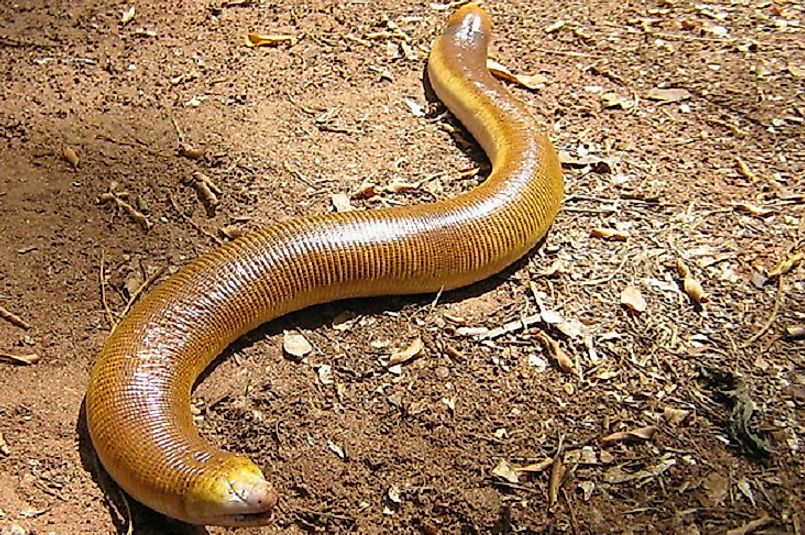The Amazing Reptiles Of Brazil

Brazil borders all of the other South American countries except for Ecuador and Chile, and covers 47.3% of the continent's land area. The capital is Brasilia while Sao Paulo is the largest city. Here is an overview of Brazil's rich and diverse reptilian fauna.
Loggerhead Sea Turtle
The Loggerhead Sea Turtle is the largest hard-shelled turtle in the world, measuring 35 inches long on average in adulthood and, in rare cases, attaining lengths of up to 110 inches. The weight of an adult turtle is over 1,000 pounds, and it has a yellow skin with a reddish-brown shell. There is no much difference especially at an early age between the male and the female but at an advanced age, the male gets thicker tails. This species of turtles spend their lives in saline and estuarine habitats apart from the females who lay eggs ashore. They lay around four eggs at a time on average, and after that rest for three years without any further reproduction. The lifespan of the turtle is sixty years and reaches sexual maturity at the age of 17 to 33 years. They are omnivorous with very powerful jaws for crushing their prey.
Golden Lancehead Pit Viper
The name comes from the golden color and the sharply shaped head of the viper. It is a very poisonous reptile with highly potent venom. Its length is around 28 inches. Bites from this reptile result in swelling, local pain, nausea, and vomiting. Reproduction starts in August where the vipers mate both in trees and the ground. The Viper prefers staying high on tree branches to while hunting, sheltering or during hostile weather. The infants feed on invertebrates while the adults feed on perching birds and lizards and in extreme cases cannibalize other vipers. There has been occurrence of inter-sexed vipers, which are vipers born with both male and female reproductive parts. These individuals are sterile.
Argentine Black and White Tegu
This species is also known as the Giant Tegu, and is known to be brilliant and has been observed to seek out humans for directly for their affection. It is the largest species of the tegu lizards measuring around four inches. The females are smaller than the males. The diet mainly consists of eggs from other reptiles, insects, and wild fruits. The giant tegu has increasingly been domesticated with some being reported to come on command and even being trained to pee and defecate on designated areas (home-broken).
Spot-Legged Wood Turtle
It is a relatively large turtle with an adult length of ten inches. The forelimbs are black spotted while the body is dark. It inhabits any fresh water body at its disposal, including ponds, marshes, coastal swamps, and large rivers in the Savanna. The turtle is omnivorous with its food including berries, dandelions, earthworms, insects, mollusks and carrion. There is no particular reproduction period, and it takes place throughout the year with the female laying in several clutches of one or two eggs under tree roots and shrubs. The wood turtle hides its body in its shell in the case of a dangerous situation in order to appear as if it is simply a piece of wood.
Red Worm Lizard
The Red Worm Lizard is a very elusive species, making it difficult for researchers to study its behavior. Henceforth, very little Is known in regard to its behavior. Reproduction takes place during the dry season, and the legless lizards use ants' nests to lay their eggs. It lays 8 to 16 eggs, made possible due to its large body size. When under threat, red worm lizards raise both their heads and their tails to assume a horseshoe position. The tail is made up of tough collagen bundles enabling the tail to absorb mechanical pressure from the bite. The body is also covered with a flexible armor causing the other areas of the lizard to be resistant to bites as well.
The Amazing Reptiles Of Brazil
| Reptiles Of Brazil | IUCN Classification |
|---|---|
| Loggerhead sea turtle | Vulnerable |
| Golden Lancehead pit viper | Critically Threatened |
| Amaral's boa constrictor | Unclassified (Data Deficient) |
| Argentine black and white tegu | Least Concern |
| Brazilian galliwasp | Least Concern |
| Country leaf-toed gecko | Not Evaluated |
| Lutz's tree iguana | Vulnerable |
| Red Worm Lizard | Least Concern |
| Schneider's smooth-fronted caiman | Least Concern |
| Spot-legged wood turtle | Least Concern |











